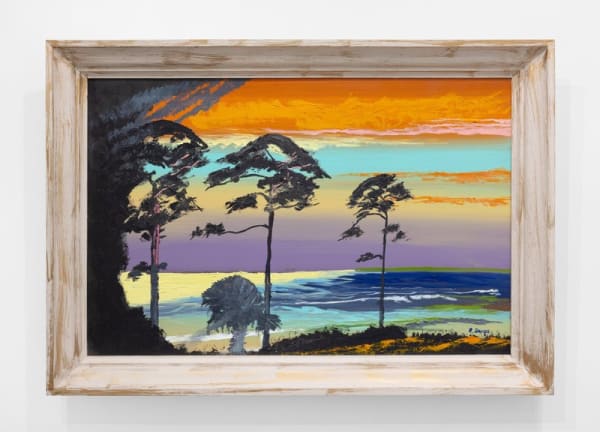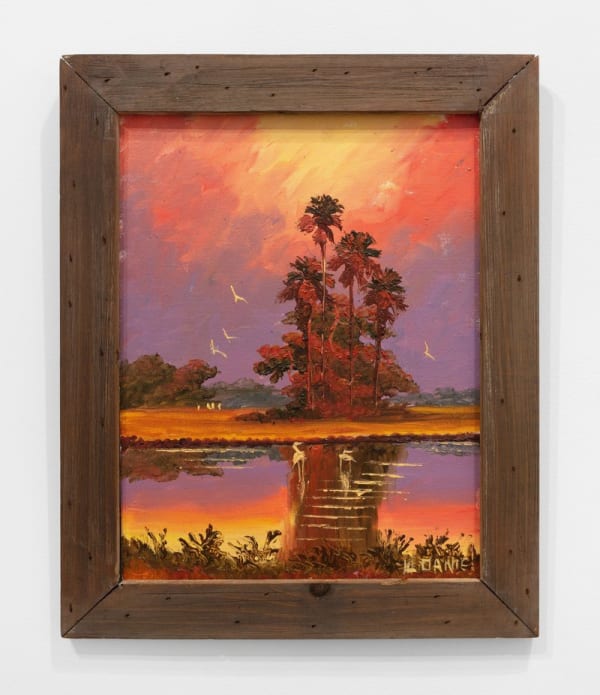Highwaymen
-

Florida’s Kaleidoscopic Skies and Windblown Palms, Immortalized by a Cohort of Black Painters
Jessica Holmes, HYPERALLERGIC, 10 August 2021 -

Highwaymen
Johanna Fateman, The New Yorker, 3 August 2021 -

5 Art Gallery Shows to See Right Now
Max Lakin, The New York Times, 29 July 2021 -

Highwaymen
Zack Hatfield, ARTFORUM, 27 July 2021
Nina Johnson and Charles Moffett are pleased to organize a joint exhibition at Charles Moffett Gallery, entitled Highwaymen, on view from July 13 to August 13, 2021. The exhibition presents paintings made by a core group of African American artists who traveled the east coast roadways of Florida, beginning in the late 1950s, painting the local palm trees, marshes, skies and tropical light. Highly relevant to the environmental and social dialogues of our present-day, their personal relationship to their work was self-driven, capturing scenery that predated structural changes to the tourism industry and commercial development of Florida’s natural landscape.
The Highwaymen are a pivotal part of the history of American landscape painting. In the lineage of the Hudson River School, the American open road, and the rise of the middle class after World War II, this survey exhibits central works from the Florida Highwaymen’s prodigious output. Working around the Fort Pierce, Florida area, the self-taught artists depicted the state’s scenic back-country. In a state with a humid subtropical climate, and an ecology prominent in mangroves, waterways, and coastal dunes, the largely self-taught painters managed to paint what no longer exists to be painted today. The works capture the uninterrupted Florida landscape, before Disney, Universal Studios, and the installation of luxurious beachfront properties. These days, as conservation efforts in Florida develop in tandem with rising seawaters, the paintings, concretized in oil on board, conserve the vision of the state’s historic naturalism. As the artists painted the coastline and inland swamps, their work defines a historic natural Florida landscape.
The paintings chronicle a time of challenge compoundedby the absence of market support and the segregation of black communities. The painters were coined the Highwaymen because their entrepreneurial strategy consisted of traveling the highways of coastal Florida and selling their paintings from the back of their cars or door-to-door along such thoroughfares as Route 1. From the roadway to the museum, their response to repression forged an artistic path beyond the prevailing racial barriers of the time and toward a self-made future. The paintings were sold in handmade artist frames, often on the same day they were made. Blocked from the gallery system because of prejudice, the Highwaymen created their own market in Florida. “The whole art life was a challenge,” said artist Mary Ann Carroll. “You go in places where you are not welcome… Some would say, ‘yes.’ Some would say, ‘no.’ Some was very nice… Everyone that bought a painting put bread on my table, kept shelter over my head, in the midst of raising seven children, [as a] single parent.”
The artists captured the poetry of the landscape with remarkable immediacy. Painting en plein air, working with a brush or a palette knife loaded with paint, the artists focused on essential formal elements—shape, space, and color—to create evocative compositions on canvas. Windblown palms, tropical sunsets and clouds, all iconic images of Florida, are suggested with a shorthand of strokes laid onto affordable and durable gypsum board. True colorists, the Highwaymen used a wide range of yellow, blue, and red hues and employed negative space and pushed their works toward abstraction. Their compositions encapsulate the passage of time. The artists worked with ambitious discipline to document a historic paradise so well described in these paintings – the American dream that people were flocking to Florida for.
The exhibition includes works by Mary Ann Carroll (1940-2019), Harold Newton (1934-1994), Sam Newton (b. 1948, Tifton, Georgia), Willie Daniels (b. 1950, Bainbridge, Georgia), Al Black (b. Jackson, Mississippi, 1940), Rodney Demps (1953-2020) and a Florida Highwaymen Collaboration (Alfred Hair, Harold Newton and Carnell Pete Smith). Their work is included in significant institutional collections including the A.E. Backus Museum, the collection of the Smithsonian’s National Museum of African American History and Culture in Washington, D.C., and the Florida Artists Hall of Fame.







